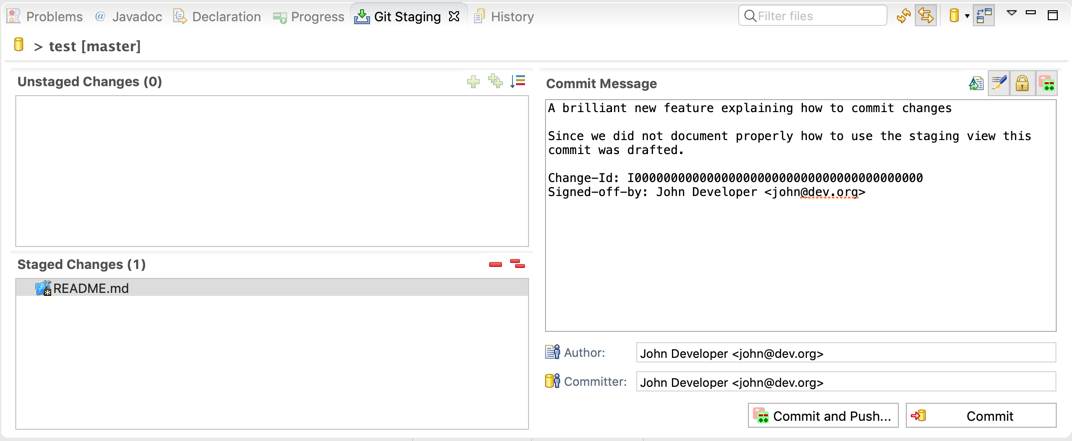
- Git Concepts Chapter Of The User-manual 2
- Git Manual Pdf
- Git Concepts Chapter Of The User-manual Movie
- Git User Manual
Git Concepts Chapter Of The User-manual 2
The Git concepts chapter of the user-manual3 and gitcore-tutorial(7) both provide introductions to the underlying Git architecture. See gitworkflows(7) for an overview of recommended workflows. See also the howto4 documents for some useful examples. It allows all developers in a team to create, review, revise, and document code in a systematic and orderly manner. Red Hat Enterprise Linux 7.5 is distributed with an open-source revision control system, Git. A detailed description of Git and its features is beyond the scope of this book. For more information about this revision control system. Git User Manual Git is a fast distributed revision control system. This manual is designed to be readable by someone with basic UNIX. A client-server system is one that employs a distributed application architecture. In a client-server system, the workload is partitioned between the providers of information or services (i.e. Servers) and requesters or consumers of information or services (i.e. Clients request information. View and Download GitUp GIT2 user manual online. GIT2 Dash Cameras pdf manual download.
- The differences between a centralized and distributed source management system
- The differences between a traditional delta model for tracking source code changes and the way that Git tracks changes
- Why Git is efficient
- How (and why) Git repositories should be organized
- Things to keep in mind when migrating repositories to Git
- Dealing with large files in Git
In this chapter, I'll explain some of the underlying key design concepts that Git uses. Implementation around these concepts forms the basis for how Git works and how to use it. I'll broadly break these concepts down into two categories, user-facing and internal, and show how they differ from more traditional source management systems. Lastly, I'll focus on some important considerations for creating repositories in Git, and managing special content such as binary files.
Git Manual Pdf

DESIGN CONCEPTS: USER-FACING
Git Concepts Chapter Of The User-manual Movie
Version control systems (VCS) such as Git can be broadly classified as either centralized or distributed. Git is an example of a distributed version control system (DVCS). Other systems in this category include Mercurial and Bazaar. Examples of a centralized version control system (CVCS) would be Concurrent Versions System (CVS) and Subversion.
The fundamental differences between a DVCS and a CVCS have to do with how the system manages repositories and the workflow that the user employs to get content into the server-side part of the system.

Centralized Model
Git User Manual
Figure 2.1 illustrates ...
Leverage the power of Git to smooth out the development cycleProfessional Git takes a professional approach to learning this massively popular software development tool, and provides an up-to-date guide for new users. More than just a development manual, this book helps you get into the Git mindset—extensive discussion of corollaries to traditional systems as well as considerations unique to Git help you draw upon existing skills while looking out—and planning for—the differences. Connected labs and exercises are interspersed at key points to reinforce important concepts and deepen your understanding, and a focus on the practical goes beyond technical tutorials to help you integrate the Git model into your real-world workflow.
Git greatly simplifies the software development cycle, enabling users to create, use, and switch between versions as easily as you switch between files. This book shows you how to harness that power and flexibility to streamline your development cycle.
- Understand the basic Git model and overall workflow
- Learn the Git versions of common source management concepts and commands
- Track changes, work with branches, and take advantage of Git's full functionality
- Avoid trip-ups and missteps common to new users
Git works with the most popular software development tools and is used by almost all of the major technology companies. More than 40 percent of software developers use it as their primary source control tool, and that number continues to grow; the ability to work effectively with Git is rapidly approaching must-have status, and Professional Git is the comprehensive guide you need to get up to speed quickly.